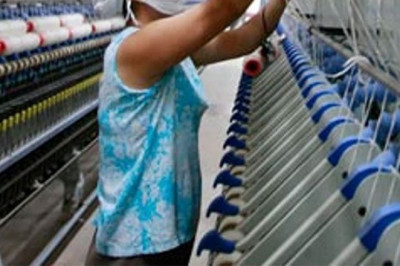views

When a person, business, or other entity does not result in a net increase in carbon dioxide emissions into the atmosphere, it is said to be in a "carbon neutral" state. Carbon neutrality is crucial in a sustainable fashion to lessen the industry's environmental effects.
A sizable portion of the world's greenhouse gas emissions, water pollution, and trash production is attributable to the fashion sector. Clothing manufacture, distribution, and disposal all have an impact on the environment. Sustainable fashion companies can lessen their carbon footprint and help to create a more sustainable future by becoming carbon neutral.
This can be accomplished through reducing emissions, making investments in renewable energy sources, and offsetting emissions through initiatives that encourage carbon sequestration, such as reforestation.
Carbon Footprint of the Fashion Industry
One of the largest global producers of carbon emissions is the fashion sector. The United Nations estimates that the fashion industry is in charge of 20% of the world's wastewater and 10% of its carbon emissions.
In addition, the greenhouse gas emissions from the fashion business exceed those from all international travel and maritime shipping put together.
The manufacture of textiles, transportation, and clothing disposal are the three main causes of carbon emissions in the fashion business. Huge amounts of energy and resources, including water and chemicals, are needed to produce textiles. Since most apparel is produced in nations with cheap labor costs and then delivered to other regions of the world for sale, transportation also adds to the carbon footprint.
The final factor that increases the carbon footprint is the disposal of clothing since textiles that are not recycled wind up in landfills where they disintegrate and release greenhouse gases.
Overall one of the biggest sources of carbon emissions is the fashion business. Sustainable practices, such recycling textiles and utilizing ecologically friendly products, must be adopted in order to lower the carbon footprint.
Additionally, local production that uses less transportation and the development of a circular economy for garments can help to lessen the environmental impact of the fashion industry.
Carbon Neutrality in Fashion
Carbon neutrality refers to the state of balancing the amount of carbon dioxide released into the atmosphere with the amount removed. In the context of the fashion industry, carbon neutrality involves minimizing carbon emissions throughout the production process, supply chain, and product life cycle, and offsetting any remaining emissions through carbon credits or other means.
Several fashion brands have committed to carbon neutrality or are taking steps towards it. For instance, Gucci announced plans to become carbon neutral in 2019 and has since implemented measures such as using renewable energy and reducing waste.
Adidas has committed to achieving carbon neutrality by 2050 and is exploring sustainable materials and circular business models. Patagonia has been carbon neutral since 2019 and has invested in renewable energy projects and carbon offsets.
However, achieving carbon neutrality in fashion poses several challenges, such as the lack of transparency in supply chains and the high energy consumption required for textile production. Nonetheless, the industry also presents opportunities, such as the development of innovative materials and manufacturing techniques and the increased adoption of circular economy practices.
Overall, achieving carbon neutrality in the fashion industry is crucial in mitigating the impact of climate change and promoting sustainable practices in the sector.
Also Check out - Vegan Fashion: The Latest Trend in Sustainability
Sustainable Materials and Carbon Neutrality
Sustainable materials play a crucial role in achieving carbon neutrality in the fashion industry. The fashion industry is responsible for a significant amount of carbon emissions due to the production of textiles, transportation, and waste disposal. However, using sustainable materials can help reduce carbon emissions and create a circular economy.
Fashion brands are increasingly using sustainable materials such as recycled polyester, organic cotton, and Tencel. Recycled polyester is made from post-consumer plastic waste, reducing the use of non-renewable resources and preventing plastic pollution. Organic cotton is grown without the use of harmful pesticides and chemicals, reducing the environmental impact of cotton production. Tencel is made from wood pulp and is produced in a closed-loop process, reducing water and chemical use.
Fashion companies may lessen their carbon footprint and aid in the transition to carbon neutrality by utilizing these sustainable materials. Carbon emissions are decreased since these materials are created with less energy and resources. They can also be recycled or biodegraded when their useful lives are over, fostering a circular economy and lowering waste.
For the garment sector to become carbon neutral, sustainable materials are essential. To lower their carbon footprint and build a more sustainable future for the industry, brands must continue to use environmentally friendly methods and products.
The Role of Consumers in Achieving Carbon Neutrality in Fashion
The achievement of fashion's carbon neutrality depends heavily on consumers. Consumer behavior has a big impact on how much carbon the fashion business emits, making it one of the biggest contributors to world emissions. Consumers can aid in lowering the carbon emissions of the fashion sector by making more environmentally friendly purchasing decisions.
Purchasing used clothing is one-way customers may make fashion decisions that are more environmentally friendly. This not only lowers the demand for new clothes production, but also increases the usefulness of already manufactured apparel. Customers can also spend their money on durable, high-quality items that are built to last for many years and are manufactured from eco-friendly materials.
By studying and selecting goods with sustainable and ethical practices, customers can also help businesses that promote sustainability. By doing this, companies may demonstrate to the fashion business that consumers value sustainability.
In general, customers can influence change in the fashion sector by making deliberate choices that lessen their carbon footprint. Small decisions like purchasing used clothing or spending money on high-quality, sustainable items can have a significant impact.
Check out our new article - How sustainable fashion can be more Inclusive and Diverse ?
Fashionnex Final Words
Finally, for sustainable fashion, reaching carbon neutrality is essential. In order to lessen the effects of climate change, the fashion sector must reduce its carbon footprint because it is one of the biggest polluters in the world.
The use of renewable energy, waste reduction, and increased supply chain transparency are just a few examples of sustainable practices that must be promoted by fashion firms, customers, and other stakeholders.
Prioritizing sustainable production practices and advancing circular economy concepts like recycling and upcycling are important. We can shape a more sustainable future for the fashion industry that benefits the earth and all its people by working together. It's time for us to take action and change the world in which we live.











Comments
0 comment